Trailing Petunias Are So Perfect For Hanging Baskets: Keep Them Out Of Reach Of Pests
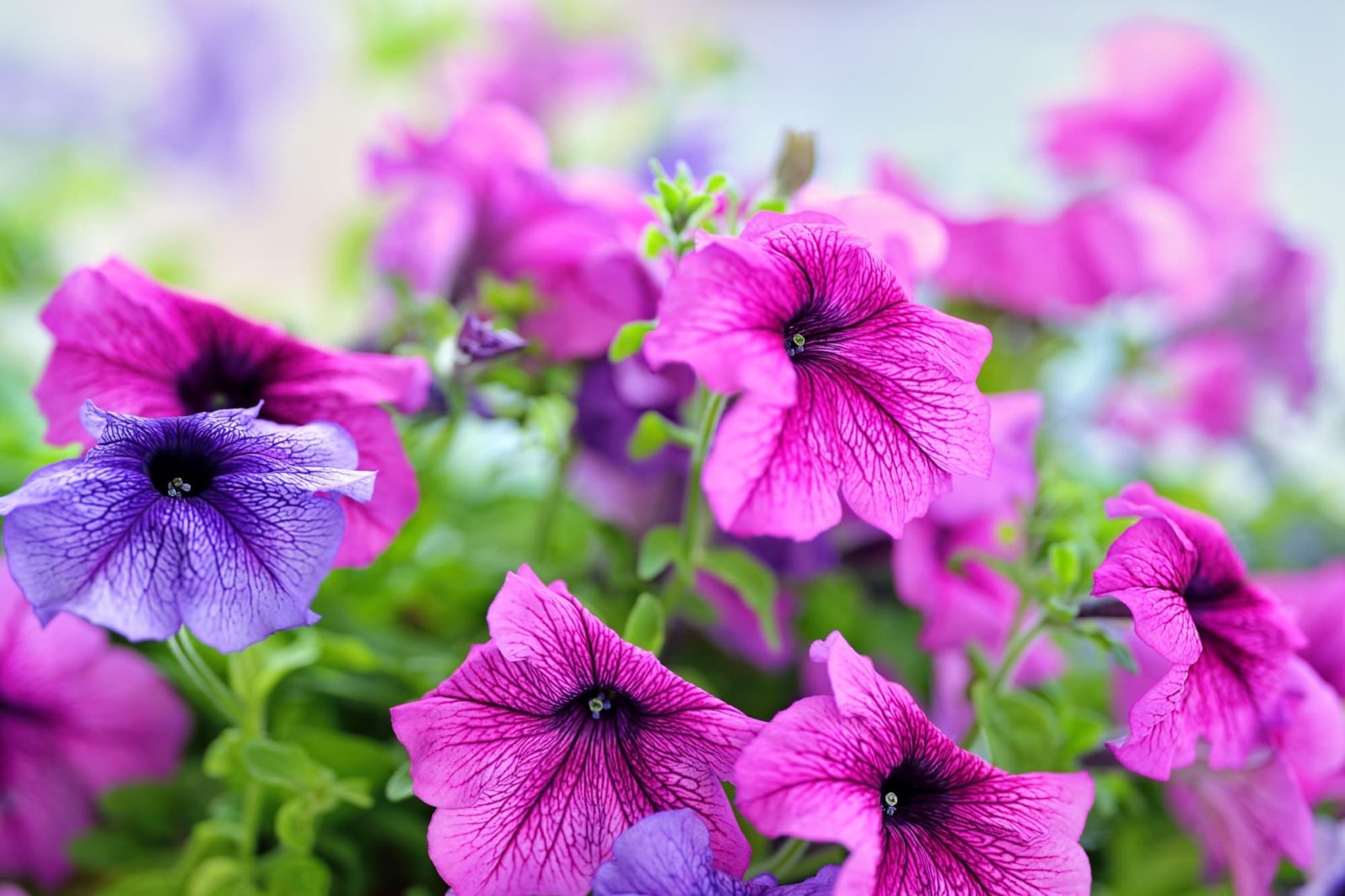
ANNUALS > PETUNIA > HANGING-BASKETS
Reviewed By COLIN SKELLY

Colin is a Horticulturist and Horticultural Consultant with experience in a range of practical and managerial roles across heritage, commercial and public horticulture. He holds the Royal Horticultural Society’s Master of Horticulture award and has a particular interest in horticultural ecology and naturalistic planting for habitat and climate resilience.
IN THIS GUIDE
PETUNIA GUIDES
Container Growing
Deadheading
Hanging Baskets
Legginess
Overwintering
Pruning
Sowing
Surfinia
Easy to cultivate and frequent bloomers throughout summer, petunias are guaranteed to brighten up any corner of the garden in which they’re placed.
However, while they do make excellent additions to a mixed border or bed, they can perform just as well in hanging baskets too.
That’s especially true for trailing varieties, which can teem over the sides of a container in dramatic fashion.
Although growing petunias in hanging baskets is largely similar to cultivating them in the ground, there are a few key things to keep in mind.
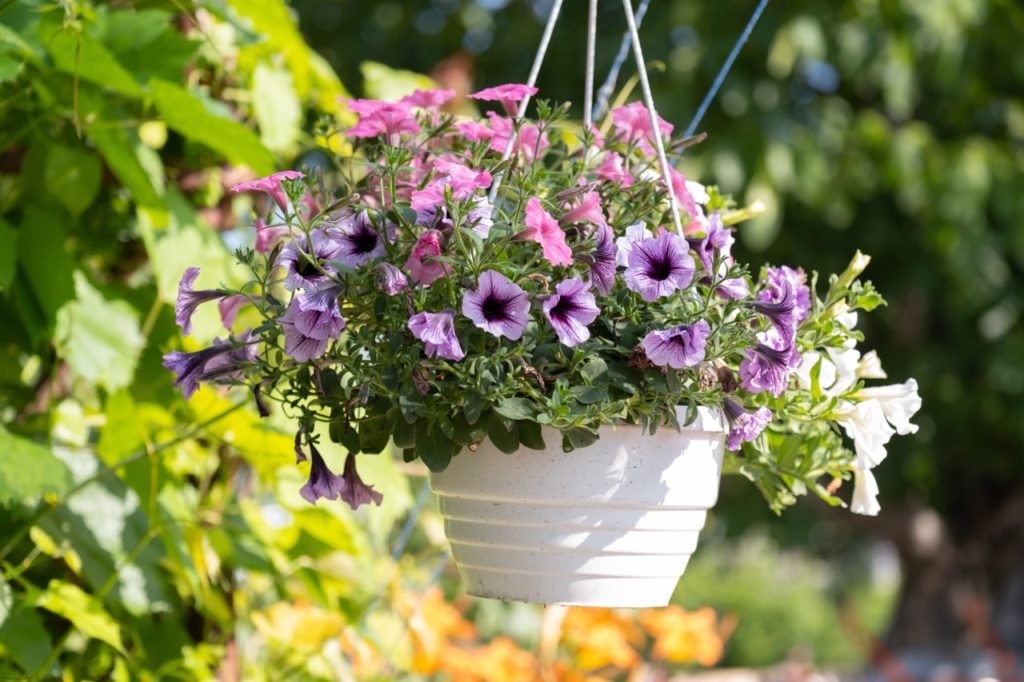
To keep matters simple, I’ve explained the process in seven easy-to-follow steps, as outlined below:
- Choose your petunia variety – you may want to opt for a trailing variety such as Sufinia or Wave for the full effect.
- Sow your petunia seeds and wait for them to germinate, or acquire plug plants from a local or online nursery.
- Select your hanging basket and consider the material you’d like to use.
- Fill the basket with potting compost.
- Plant your petunias and enrich your basket with organic mulch.
- Hang your basket in an area sheltered from the wind that still receives plenty of sunlight.
- Water your petunias regularly, feed as necessary and deadhead when required.
For those still unsure about one or more of these steps, I’ve covered each in further detail below.
| Difficulty | Easy |
| Equipment Required | Petunia seeds or plants, hanging basket, potting compost, watering can, fertiliser, trowel |
Why Grow Petunias In Hanging Baskets?
As well as the aesthetic appeal of seeing your petunias spill over the sides of the basket, there are a few other practical benefits.
Firstly, not everyone is lucky enough to have a huge garden at their disposal.

Hanging baskets are a godsend in this respect since they can turn a balcony, patio or doorstep into an opportunity to cultivate beautiful blossoms.
What’s more, hanging baskets have the added advantage of being further out of reach of pests.
Slugs and snails and other creepy crawlies love to feast on petunias, but hanging them in baskets makes them less accessible and generally easier to care for.
1) Choose A Trailing Variety
With more than 16 species of petunia to choose from (according to Kew) and dozens more hybrid cultivars, you’re spoiled for choice when it comes to selecting a variety for your hanging basket.1Petunia Juss. (n.d.). Kew Botanic Gardens. Retrieved May 25, 2023, from https://powo.science.kew.org/taxon/urn:lsid:ipni.org:names:331845-2
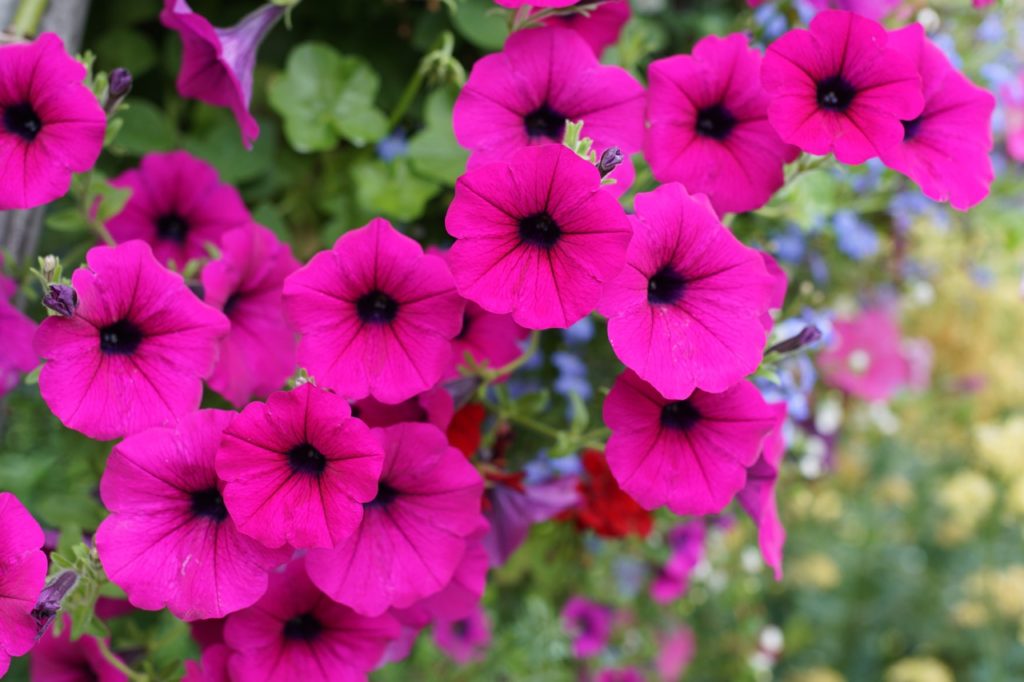
Although mounding petunias will perform just fine in a hanging basket, I personally recommend choosing a trailing variety like Surfinia so you can achieve that impressive cascading effect.
Supertunias and Wave varieties are also desirable because they are said to ‘self-clean’ – which basically means they deadhead themselves and therefore require little attention.2Supertunia® – What’s the Difference? (n.d.). Proven Winners. Retrieved May 25, 2023, from https://www.provenwinners.com/supertunia_differences
“Petunias that shed spent leaves save time on deadheading but you will still need to remove the fallen flowers,” says Colin Skelly, a Master Horticulturist.
“Spent flowers will turn into a slimy, slippery mess that can be a slip hazard, so remember to regularly sweep under your hanging baskets.”
2) Sow Your Petunia Seeds
Whichever variety you settle upon, you’ll need to coax them into life from seed first.
Of course, you can always acquire potted plants from your local nursery and skip this step.
However, if you do plan on growing from seed, this is a job best done indoors that should be started around 10 weeks before you plan to move them outside into their final home.
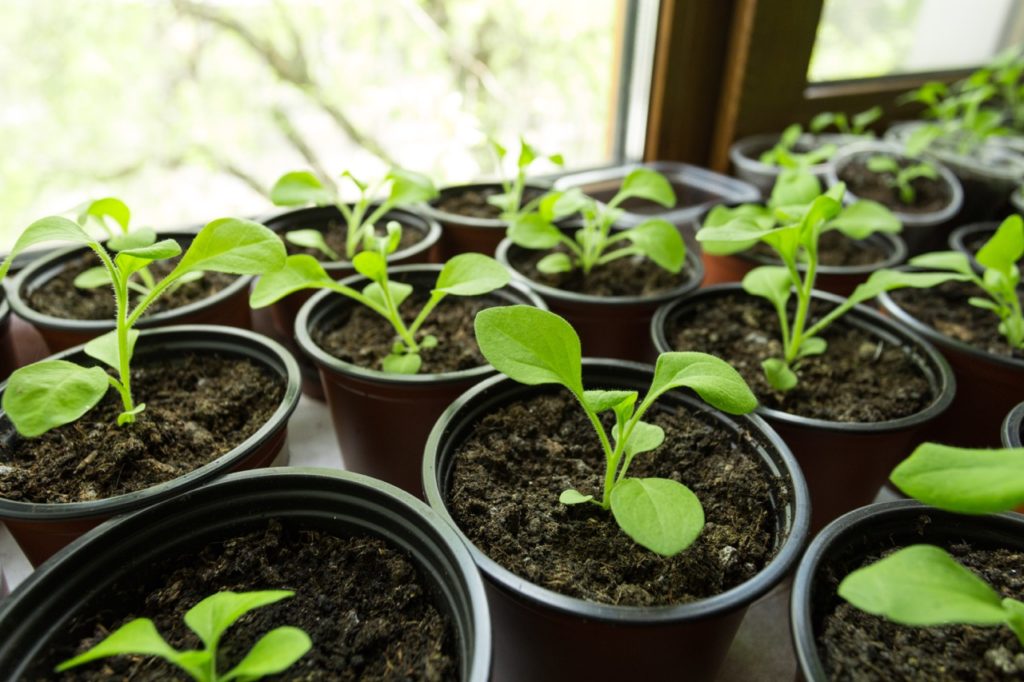
We have an entire guide explaining this process.
Once your seedlings have gained a few centimetres in height and boast at least two sets of leaves, you can start hardening them off so they can acclimatise to the colder outdoor temperatures.
Move them outside for a couple of hours each day so that they are able to adjust.
3) Choose A (Well-Draining) Hanging Basket
While the seeds are working their magic, you can turn your attention to the hanging basket itself.
Hanging baskets come in all shapes and sizes and can be made from wicker, wire and a variety of other materials.
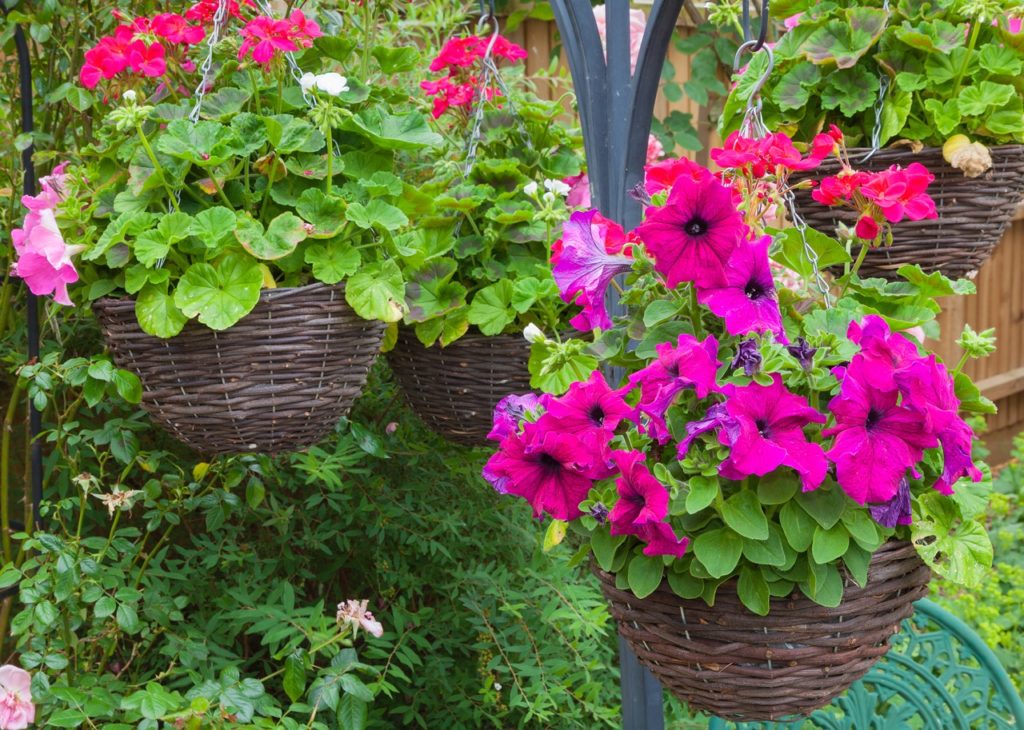
Whichever type you opt for, make sure it has adequate drainage holes and large enough dimensions to grow petunias.
As a general rule, select a basket that’s at least 25cm in diameter so you can place several seedlings or potted plants in it at once.
4) Fill Your Basket With Potting Soil
Because of their raised position, hanging baskets tend to drain much more quickly than even other potted plants.
As such, the compost is important.
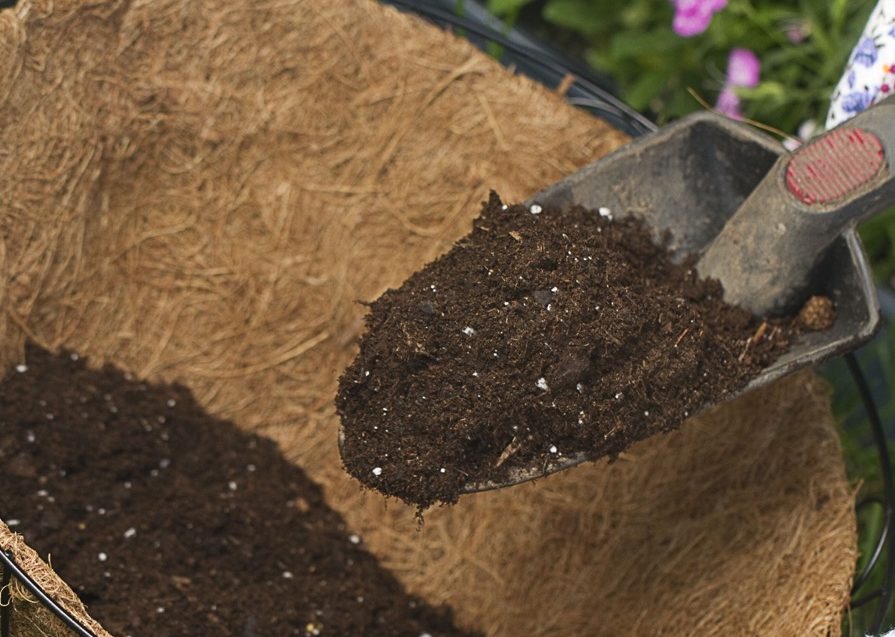
Garden soil is not sufficient for the job, so you should select a specific potting soil instead.
You can enrich the soil with organic mulch, which will help to retain moisture and boost the nutrient content.
You can also add a slow-release fertiliser at this point, which will sustain the petunias over an extended period of time.
5) Plant Your Petunias Together
With your petunias now sufficiently established to survive transplantation, it’s time to plant them in the basket.
Make small indentations in the soil and place your seedlings in them, firming up the earth around them.
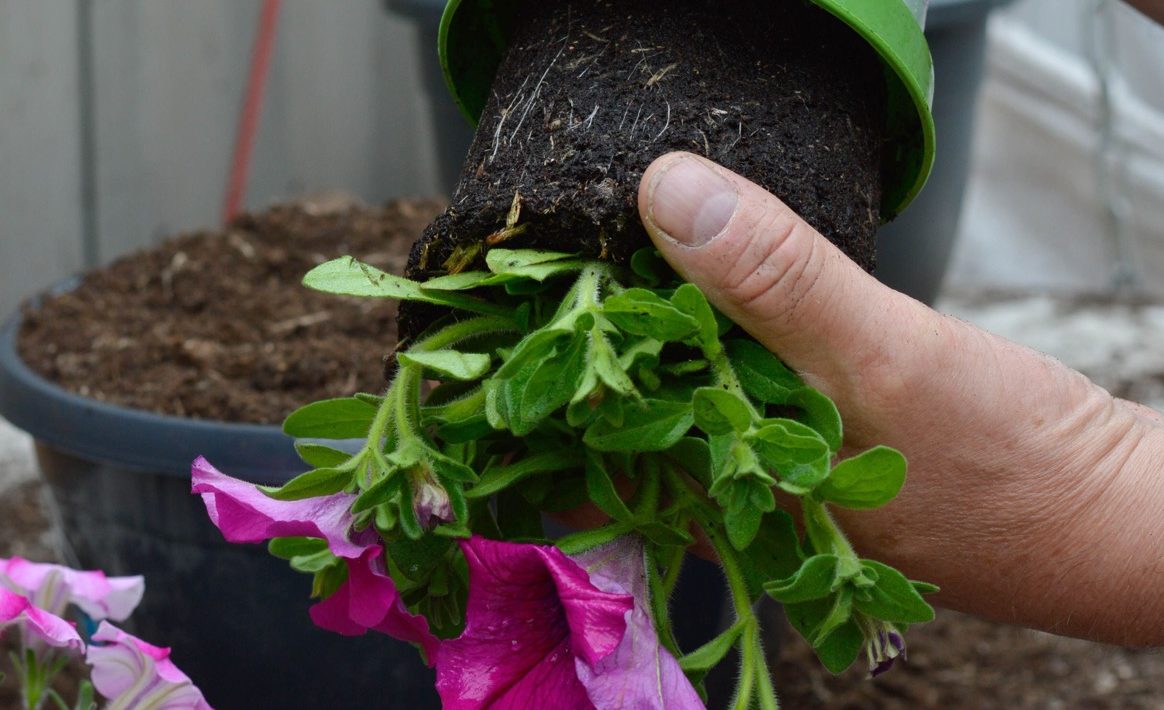
Generally speaking, you should allow 5cm of breathing space for each seedling so that its roots can properly develop.
As such, a basket with a diameter of 25cm should house no more than 5 petunia plants.
6) Hang In A Suitable Spot
Next, it’s time to find an appropriate position for the basket itself.
Petunias absolutely love sunlight, so choosing a spot which receives at least 6 hours of sunlight per day is crucial to their success.
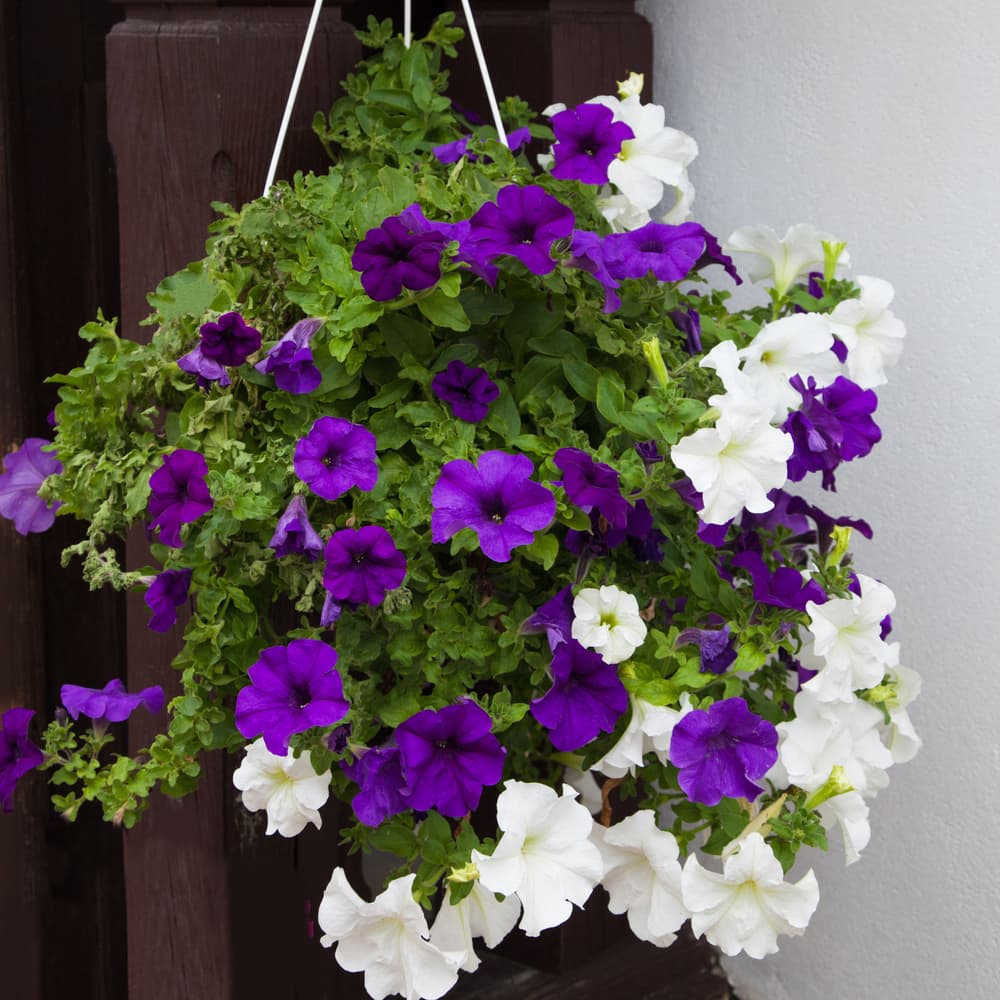
On the other hand, hanging baskets can be quite vulnerable to the elements.
For that reason, it’s advisable to hang your basket in a spot that’s sheltered from the worst of the wind and rain where possible.
7) Water, Feed & Deadhead Regularly
As mentioned above, hanging baskets tend to dry out more rapidly than other plants.
Therefore, it’s important to water the soil on a regular basis, soaking it thoroughly so that it drains from the bottom each time.
To test whether it needs a drink, you can lift the basket with your hand.
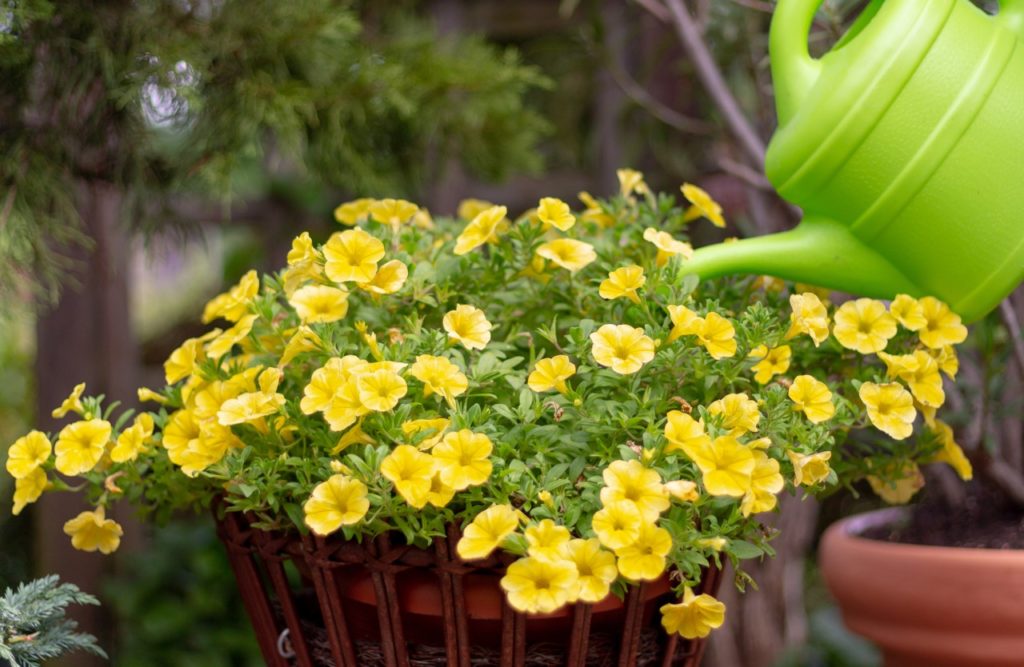
If it feels light, it’s thirsty.
Petunias will also benefit from fertilisation.
In addition to the slow-release product mentioned above, you can also feed it with a water-soluble fertiliser every third time you irrigate.
Last but not least, the importance of deadheading petunias cannot be overstated.
Removing spent blooms diverts the plant’s energy away from seed production and towards flower generation, so deadheading every few days will ensure brighter blossoms for a longer period of time.
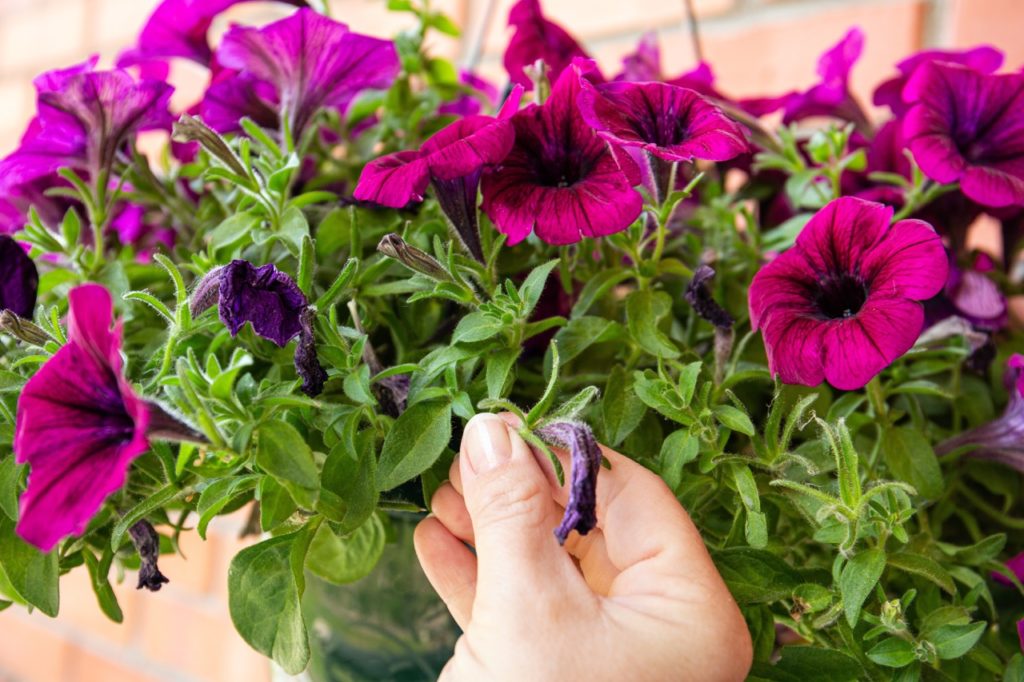
To do so, simply snip or pinch off spent blossoms just below the bud, taking care to remove the seed pod as well.
Repeat as often as you can for the duration of the blooming season.
References
- 1Petunia Juss. (n.d.). Kew Botanic Gardens. Retrieved May 25, 2023, from https://powo.science.kew.org/taxon/urn:lsid:ipni.org:names:331845-2
- 2Supertunia® – What’s the Difference? (n.d.). Proven Winners. Retrieved May 25, 2023, from https://www.provenwinners.com/supertunia_differences

